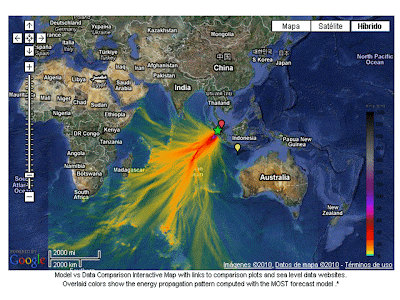Description:
As the largest marginal sea in the western Pacific, the South China Sea receives approximately 570 million tons of fluvial sediments annually through numerous rivers in adjacent continents and islands, including both world largest rivers (e.g., Pearl, Red, and Mekong) and small mountainous rivers (e.g., rivers in middle Vietnam, southwestern Taiwan, and Luzon). The river-borne terrigenous sediments have formed high sedimentation-rate deposits mostly on shelves of the South China Sea, and have recorded detailed climatic and environmental changes occurring in land source regions both naturally and anthropogenically.
To further understand how human activities affect sediment discharge and develop scenarios of future changes, the Intergovernmental Oceanographic Commission Sub- Commission for the Western Pacific (WESTPAC) established the project “Fluvial Sediment Supply to the South China Sea: Anthropogenic and Natural Aspects (FluSed)” at its 7th Session in May 2008 (Phase I, May 2008-May 2010), and then decided to extend the project at its 8th Session in May 2010 (Phase II, May 2010-May 2012). The project aims to: (i) investigate fluvial sediment discharge to the South China Sea; (ii) determine source and transport of sediments in the South China Sea during the geological past, and (iii) predict the future sediment discharge.
In its first phase of implementation, workshops and joint sampling provided a platform for scientists surrounding the South China Sea and in other regions to share their scientific knowledge, address data gaps and stimulate new ideas on the study of the fluvial sediment discharge. The first and second workshops were held in Tongji University at Shanghai. The third workshop is planned to be held in Quezon City, Philippines.
Call for Abstracts:
The Third Workshop welcomes presentations that deal with fluvial sediment records both on land and in the South China Sea. Sub-topics may cover weathering and erosion in river drainage basins, paleoclimate and detrital and chemical fluxes from land to sea, sea level changes and sequence stratigraphy in shelf and slope regions, deep-water sedimentation, and effects of human activities on sediment discharge.
Venue:
Marine Science Institute, University of the Philippines, Diliman, Quezon City 1101, Philippines
Schedule:
16 November 2010: Registration (19:00-21:00 2nd meeting of Project Steering Group)
17-18 November 2010: Scientific program (the program sessions will consist of several 30-minutes keynote speeches plus 20-minutes oral presentations to be announced at a later stage)
19-20 November 2010: Field excursion
Important Dates:
30 September 2010: Deadline for travel grant application
10 October 2010: Notification of travel grants
20 October 2010: Deadline for abstract submission, and 30 September 2010 for those who applying for a travel grant
30 October 2010: Deadlines for field excursion registration, reservation of accommodation, and payment of registration fee
Local Organizers:
Marine Science Institute, University of the Philippines
State Key Laboratory of Marine Geology, Tongji University
Local Organizer Contact:
Fernando Siringan
Marine Science Institute, University of the Philippines
Diliman, Quezon City 1101
Tel/Fax: +632-433 6063
Email: ando.msi@gmail.com
Registration:
For registration, please complete the enclosed Registration Form and send it to the Local Organizer by fax or e-mail.
Registration fees: US$250 for professional, US$200 for student, and US$200 for accompanying person. (Registration fee includes program & abstracts volume, coffee breaks, meals and accommodations from 16-18 November. The detailed means of payment will be announced in the second circular.
Abstract Submission:
Abstracts should be e-mailed to the Local Organizer (ando.msi@gmail.com) on or before 20 October 2010. Abstract format: MS Word file; title, authors, affiliation (s), e-mail address of corresponding author, main text (A4, maximum 2 pages including figures). All abstracts will be collated in an abstract volume that will be distributed to all participants.
Field Excursion:
A two-day field excursion to the Zambales coast, northwest of Luzon (19-20 November 2010) will be organized with a price of US$150. The fee will cover transportation, meals, 1 night hotel in Zambales and 1 extra night in Quezon City, accidental insurance. The excursion may be cancelled depending on level of response from delegates. Details of the field excursion will be posted later.
Accommodations:
Accommodations from 16-18 November 2010 and 20 November 2010 will be at the University Hotel. This hotel is located within walking distance, about 15 minutes, from the meeting site.
Travel grants:
The Organizers will help participants from WESTPAC countries to attend the Workshop with travel grants to cover partial travel costs to the Philippines and accommodations in Quezon City, Philippines. Travel grants will be used to pay the registration fee prior to the Workshop or to be offered in cash during the Workshop. Those who plan to apply for the grants should submit their applications along with abstracts on or before the deadline for travel grant application (30 September 2010). The application materials include: (1) a cover letter containing personal information, detailed travel budget, and the amount you are applying for; (2) an updated CV; (3) name and address (including email address) of one scientific reference. The notification of grants will be on 10 October 2010.
Ground Transportation:
Flights to the Philippines for Quezon City as final destination may use the Diosdado Macapagal International Airport in Clark, Pampanga or the Ninoy Aquino International Airport (NAIA) in Pasay, Metro Manila. However, participants are encouraged to use NAIA as this is closer to Quezon City and there are more public transport vehicles to Quezon City.

